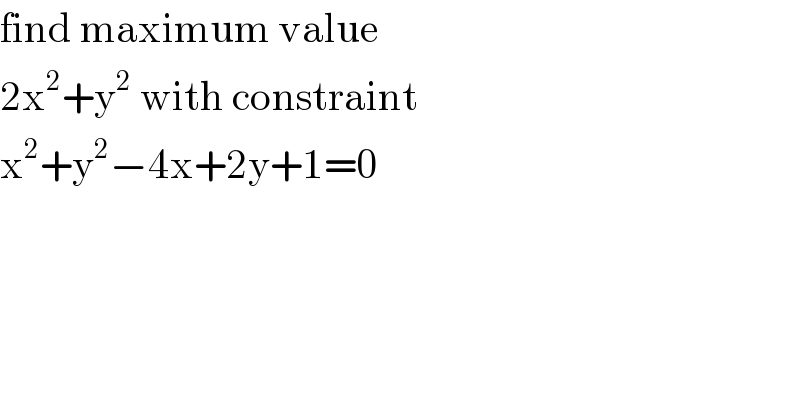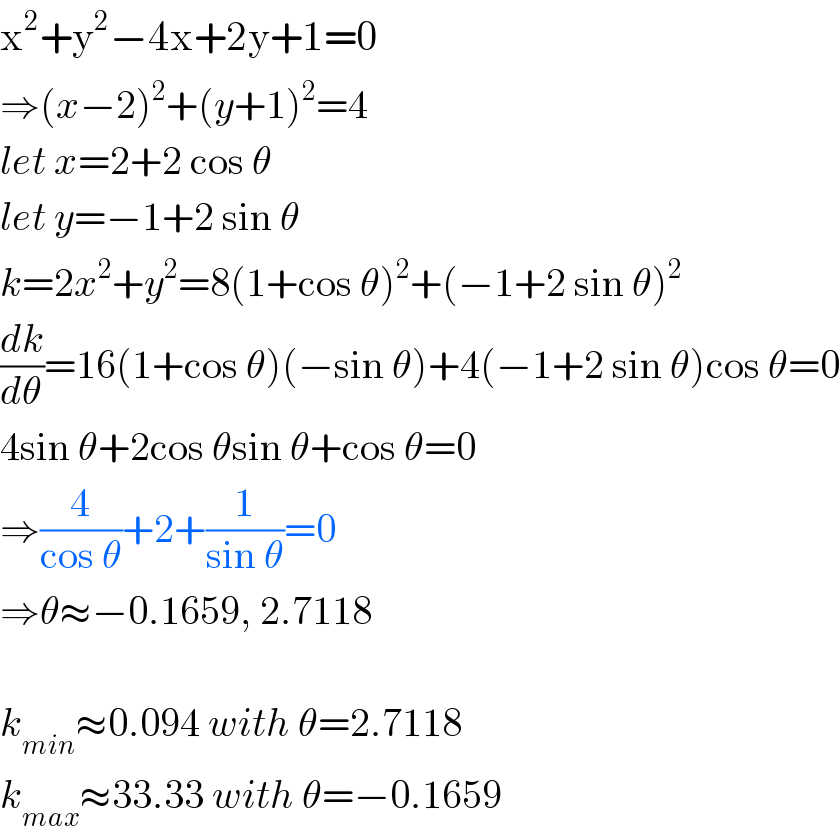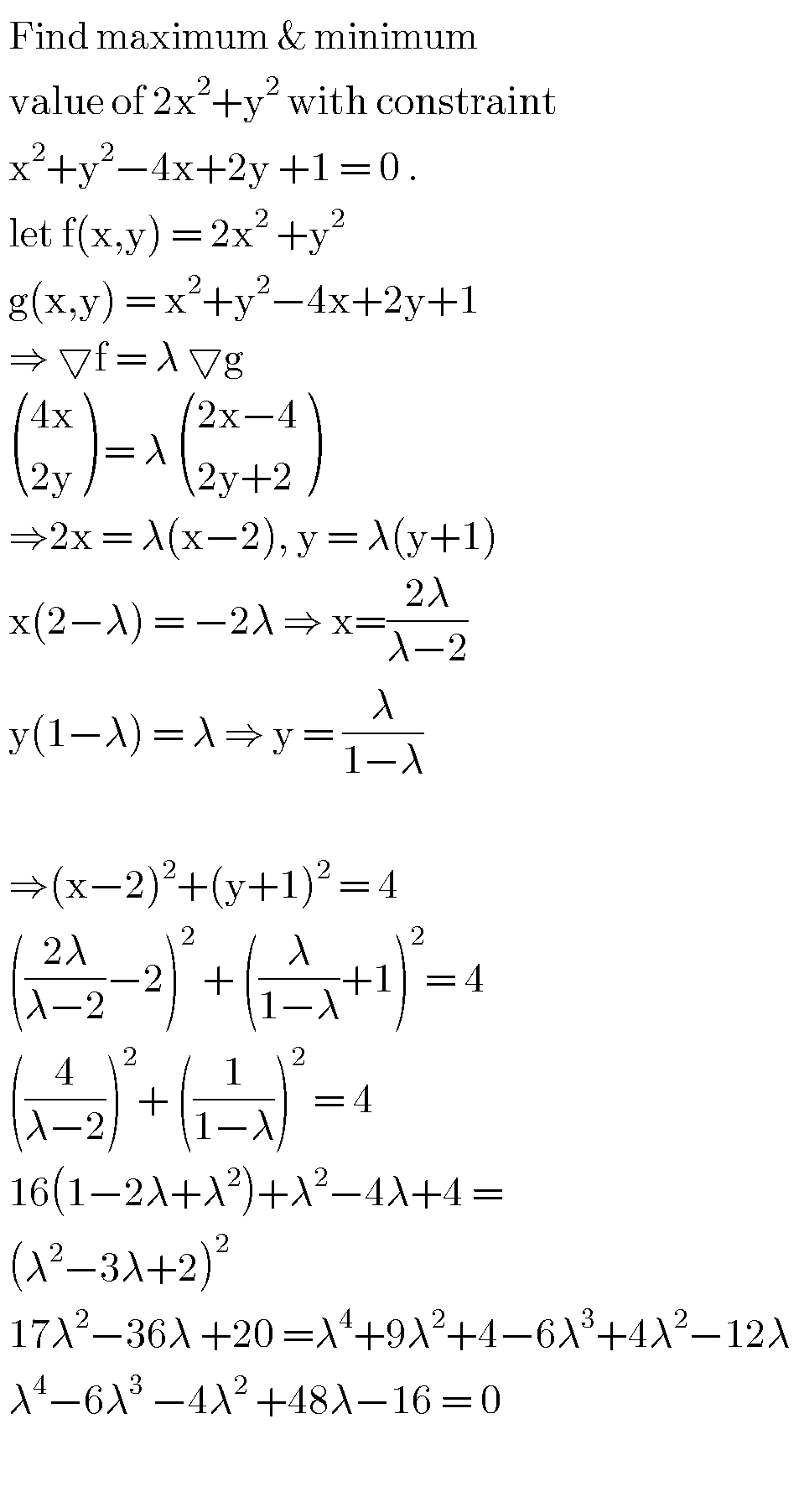
Question and Answers Forum
Question Number 87989 by john santu last updated on 07/Apr/20

Answered by mr W last updated on 07/Apr/20

Commented by mr W last updated on 07/Apr/20

Answered by john santu last updated on 08/Apr/20

Commented by mr W last updated on 08/Apr/20

Commented by john santu last updated on 08/Apr/20

